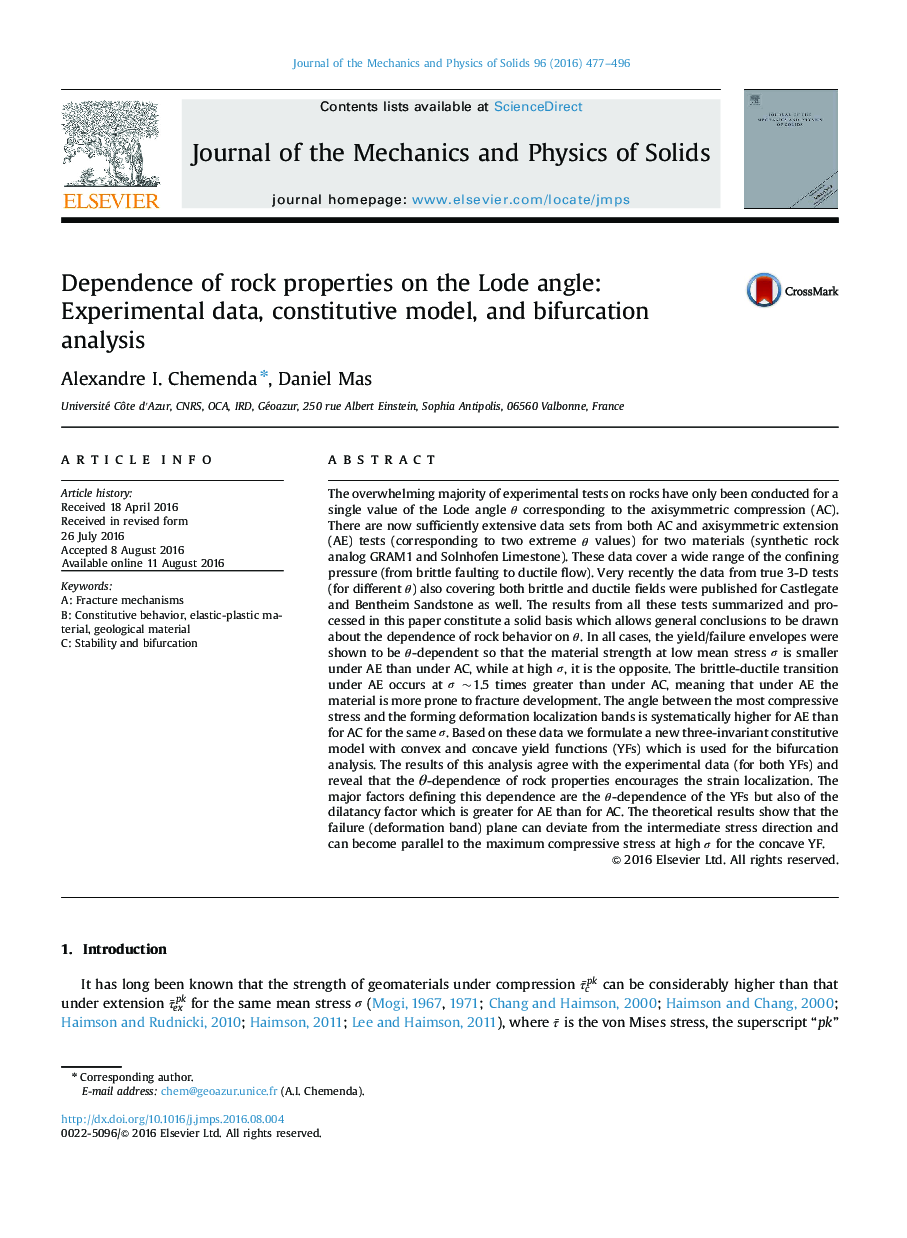| Article ID | Journal | Published Year | Pages | File Type |
|---|---|---|---|---|
| 7177607 | Journal of the Mechanics and Physics of Solids | 2016 | 20 Pages |
Abstract
The overwhelming majority of experimental tests on rocks have only been conducted for a single value of the Lode angle θ corresponding to the axisymmetric compression (AC). There are now sufficiently extensive data sets from both AC and axisymmetric extension (AE) tests (corresponding to two extreme θ values) for two materials (synthetic rock analog GRAM1 and Solnhofen Limestone). These data cover a wide range of the confining pressure (from brittle faulting to ductile flow). Very recently the data from true 3-D tests (for different θ) also covering both brittle and ductile fields were published for Castlegate and Bentheim Sandstone as well. The results from all these tests summarized and processed in this paper constitute a solid basis which allows general conclusions to be drawn about the dependence of rock behavior on θ. In all cases, the yield/failure envelopes were shown to be θ-dependent so that the material strength at low mean stress Ï is smaller under AE than under AC, while at high Ï, it is the opposite. The brittle-ductile transition under AE occurs at Ï ~1.5 times greater than under AC, meaning that under AE the material is more prone to fracture development. The angle between the most compressive stress and the forming deformation localization bands is systematically higher for AE than for AC for the same Ï. Based on these data we formulate a new three-invariant constitutive model with convex and concave yield functions (YFs) which is used for the bifurcation analysis. The results of this analysis agree with the experimental data (for both YFs) and reveal that the θ-dependence of rock properties encourages the strain localization. The major factors defining this dependence are the θ-dependence of the YFs but also of the dilatancy factor which is greater for AE than for AC. The theoretical results show that the failure (deformation band) plane can deviate from the intermediate stress direction and can become parallel to the maximum compressive stress at high Ï for the concave YF.
Related Topics
Physical Sciences and Engineering
Engineering
Mechanical Engineering
Authors
Alexandre I. Chemenda, Daniel Mas,
